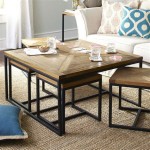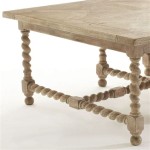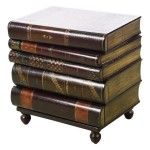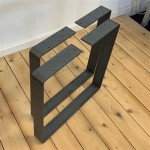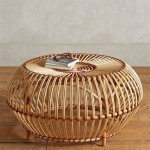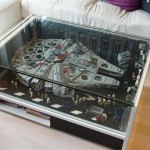```html
Types of Tables Used In Restaurants
The selection of tables in a restaurant is a critical decision, influencing not only the dining experience but also the flow of service and overall aesthetic. A thoughtful choice considers factors such as the restaurant's theme, the target clientele, available space, and operational efficiency. Different table types serve distinct purposes, catering to varying group sizes and dining styles. This article will explore the prevalent types of tables employed in the restaurant industry, offering insights into their characteristics and applications.
Standard Dining Tables
Standard dining tables are the workhorses of most restaurants. These tables are typically rectangular or square and designed to accommodate a range of group sizes. They are versatile and easily adaptable to different layouts and seating arrangements. The dimensions of standard dining tables vary, with common sizes including 30x30 inches for two people, 36x36 inches for four, and 30x48 inches or 30x60 inches for larger groups. The height of standard dining tables is generally between 28 and 30 inches, providing comfortable seating for most individuals.
The materials used in constructing standard dining tables can range from solid wood, veneer, laminate, to metal. Solid wood tables are often favored for their durability and aesthetic appeal, lending a classic and sophisticated touch to the dining area. Veneer tables offer a more cost-effective alternative, providing a wood-like appearance without the higher price point. Laminate tables are known for their resistance to scratches and stains, making them a practical choice for high-traffic restaurants. Metal tables, particularly those with stainless steel or cast iron bases, are often preferred in modern or industrial-themed establishments.
The shape of the table also contributes to the dining experience. Rectangular tables are ideal for maximizing seating capacity in narrow spaces, while square tables promote a more intimate and conversational atmosphere. Round tables, though less space-efficient, can foster a sense of inclusivity and are often chosen for special occasions or group gatherings. The choice of table shape should align with the restaurant's overall design and target customer preferences. For example, a fine-dining establishment might opt for elegant round tables, while a casual bistro might prefer rectangular tables for their practicality.
Furthermore, the base of the table plays a critical role in stability and aesthetics. Common table base types include four-legged bases, pedestal bases, and trestle bases. Four-legged bases provide stable support and are suitable for a variety of table sizes and shapes. Pedestal bases, consisting of a single central support, offer more legroom and a cleaner look. Trestle bases, characterized by two or more vertical supports connected by a horizontal beam, are often found in rustic or farmhouse-style restaurants.
High-Top Tables and Bar-Height Tables
High-top tables, also known as bar-height tables, are elevated surfaces designed to be paired with stools or high chairs. These tables are typically taller than standard dining tables, ranging from 40 to 42 inches in height. High-top tables are commonly found in bars, pubs, and casual restaurants, offering a more informal and social dining experience. They can be used to create a lively atmosphere, especially in areas designated for socializing or watching sports. High-top tables also help to maximize space utilization by providing additional seating options in smaller venues.
The materials used in high-top table construction are similar to those used in standard dining tables, including wood, metal, and laminate. However, the structural integrity of high-top tables is particularly important, as they are subject to greater stress and movement. Sturdy bases are essential to ensure stability and prevent wobbling. Metal bases are often preferred for their durability and resistance to wear and tear. Additionally, high-top tables may feature footrests to enhance comfort for patrons seated on stools.
High-top tables come in various shapes and sizes, including round, square, and rectangular. Smaller round or square high-top tables are suitable for couples or small groups, while larger rectangular high-top tables can accommodate larger gatherings. The choice of table shape depends on the available space and the desired seating arrangement. Some restaurants incorporate a mix of high-top and standard dining tables to cater to a diverse range of customer preferences.
The implementation of high-top tables can also impact the flow of service. Servers may need to adapt their techniques to effectively serve patrons seated at elevated surfaces. Clear pathways and adequate space between tables are crucial to ensure smooth navigation and prevent accidents. Furthermore, the acoustics of the space should be considered, as high-top tables can contribute to noise levels in a restaurant. Strategies such as sound-absorbing materials or strategically placed partitions can help to mitigate noise pollution.
Booth Seating and Banquettes
Booth seating and banquettes offer a comfortable and intimate dining experience, often preferred by families and couples. Booths typically consist of two parallel benches facing each other, separated by a table. Banquettes, on the other hand, are continuous upholstered benches that run along a wall, providing seating for multiple diners. Both booth seating and banquettes are space-efficient and can create a more secluded and private atmosphere compared to standard dining tables.
The design of booth seating and banquettes can vary widely, depending on the restaurant's theme and aesthetic. Upholstery materials range from durable fabrics to luxurious leather, offering a wide array of color and texture options. The height and depth of the benches should be ergonomically designed to provide comfortable seating for a variety of body types. Backrests are essential for providing support and promoting proper posture. Some booths and banquettes may also feature additional amenities such as coat hooks or storage compartments.
Booth tables are generally fixed in place, providing stability and preventing movement. They are typically rectangular or square, with dimensions that correspond to the size of the booth. Banquette tables, on the other hand, may be freestanding or attached to the banquette. The choice of table type depends on the desired level of flexibility and the overall design of the space.
The placement of booth seating and banquettes should be carefully considered to optimize space utilization and traffic flow. They are often positioned along walls or in corners, maximizing seating capacity while minimizing disruption to other diners. Adequate space should be provided between booths and banquettes to allow for easy access and comfortable movement. Furthermore, the lighting in the booth area should be carefully planned to create a warm and inviting atmosphere.
Outdoor Tables
Outdoor tables are specifically designed for use in patios, terraces, and other outdoor dining areas. These tables must be durable and weather-resistant to withstand the elements, including sunlight, rain, and wind. Common materials used in outdoor table construction include aluminum, stainless steel, teak, and synthetic wicker. Aluminum and stainless steel are lightweight and resistant to corrosion, making them ideal for coastal environments. Teak is a durable hardwood that naturally resists moisture and decay. Synthetic wicker is a low-maintenance and weather-resistant alternative to natural wicker.
Outdoor tables come in a variety of shapes and sizes, similar to indoor tables. However, outdoor tables are often designed with features that enhance their stability and prevent them from being easily blown over by the wind. These features may include weighted bases, adjustable feet, and interlocking table tops. Some outdoor tables also feature umbrella holes, allowing diners to enjoy shade on sunny days.
The selection of outdoor tables should complement the restaurant's overall aesthetic and the surrounding environment. For example, a rustic outdoor patio might feature wooden tables with wrought iron bases, while a modern outdoor terrace might incorporate sleek aluminum tables with glass tops. The choice of table color and finish should also be carefully considered to create a cohesive and visually appealing outdoor dining space.
Maintenance of outdoor tables is crucial to ensure their longevity and appearance. Regular cleaning is essential to remove dirt, grime, and stains. Protective coatings or sealants may be applied to wood or metal tables to prevent weathering and corrosion. Cushions and upholstery should be cleaned and stored properly during inclement weather to prevent damage. With proper care and maintenance, outdoor tables can provide a comfortable and inviting dining experience for years to come.
```
Restaurant Tables Guide Materials Durability Aesthetics

Restaurant Tables Cost Guide World Coppersmith

The Complete Guide To Dining Tables Types And Styles Cabinfield Blog

How Many Types Of Restaurant Tables Are Available

The Complete Guide To Dining Tables Types And Styles Cabinfield Blog

10 Popular Restaurant Table Designs In

Promotion News 1 8m Round Dining Table For Banquet Made In China Com

Commercial Restaurant Tables Webstaurant

Types Of Restaurant Tables A Comprehensive Guide

10 Types Of Wood Tables For Each Restaurant Style Furniture Plus
Related Posts

